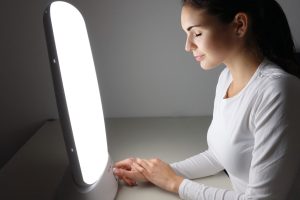 It’s easy for the winter to get people down. It’s cold, there isn’t a lot of sunlight or color, and the pandemic is resurging.
It’s easy for the winter to get people down. It’s cold, there isn’t a lot of sunlight or color, and the pandemic is resurging.
In short, you might feel a little blue.
Advertisement
If you find that your mood drops in the winter, and perhaps more than just an occasional case of the blues, you might have Seasonal Affective Disorder, or SAD.
SAD can set in the fall as the temperatures begin to dip and days get a little shorter, then continue through winter until they finally subside in the spring. Symptoms can range from mild to severe and can interfere with daily life.
Here is a quick checklist to help you determine if you have SAD. Remember, these symptoms would hit seasonally:
- Feeling sad or depressed
- Loss of interest in things you would typically enjoy
- Sleeping much more but not feeling rested
- Difficulty with thinking, concentrating, and decision making
- Feeling guilty/worthless
- Strong and regular cravings for high carbohydrate foods/other changes in appetite
A number of treatments exist, but one useful and relatively low-cost option is light therapy. An individual would sit by a device called a lightbox, which emits bright light, for about 20 minutes per day first thing in the morning.
Advertisement
Results may take about a week or two, and some people with SAD even start light therapy in the fall as the winter approaches.
More exposure to natural sunlight can also help some people with SAD. Try sitting by a window in the morning and spending more time outdoors during the day. Arrange the rooms you spend the most time in to be well lit with natural light (except the bedroom).
Exercise, a healthy diet, regular sleep, and maintaining strong relationships with family and friends may also help.
